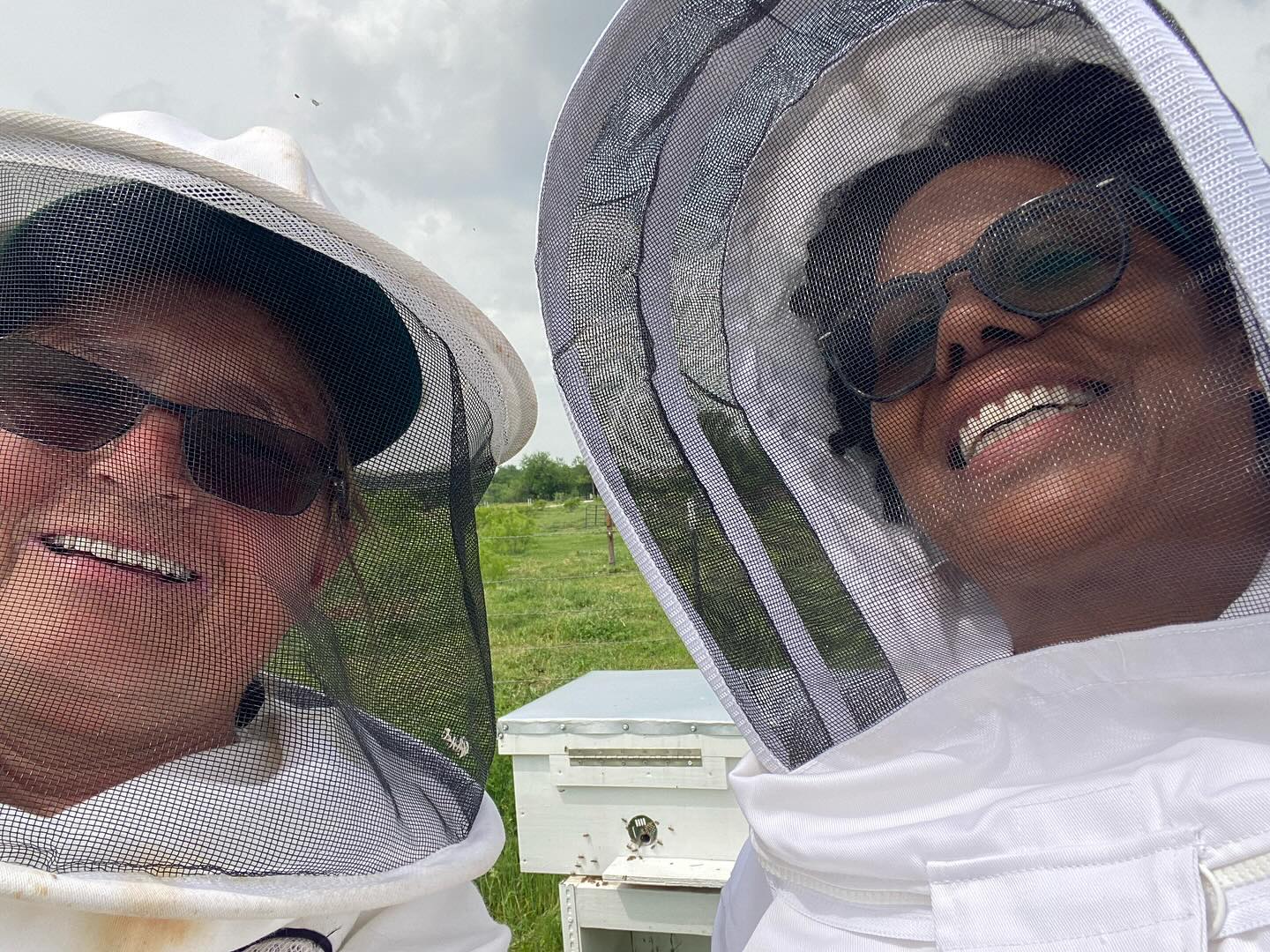Moringa is a global superfood finding new ground in Texas.
Once known as the “miracle tree” across Asia and Africa, Moringa is now thriving on small farms from Denton to San Antonio. Its leaves, pods, and seeds are prized for nutrition, its oil is valued in skincare and cooking, and its resilience makes it a crop worth watching as climates warm and water grows scarce.
Curious to see it up close? Visit Nature’s Circle Farm in Aurora, Texas for a hands-on Moringa tour where sustainable farming and local learning come together. You can also spot Moringa among other healing species on the Medicinal Plant Hike in Glen Rose, part of a guided walk exploring the connections between native and cultivated plants.
🌱 Growing Moringa in Texas
Moringa trees love heat and sunshine. In Texas, they thrive from late spring through fall, growing rapidly in warm months before going dormant in winter. While they can’t tolerate hard freezes, growers often prune them to ground level and let them re-sprout each year—an approach that fits Texas’ short frost window perfectly.
Their ability to flourish in poor soil, tolerate drought, and produce nutritious leaves makes them a model for sustainable agriculture.
→ Explore its climate range in Where Moringa Grows: Texas & Global Perspectives
→ See how production is expanding in Moringa Production Trends
🍽️ Cooking with Moringa
Cooking with Fresh Moringa Leaves
Moringa’s tender young leaves have a peppery, earthy flavor—somewhere between spinach and horseradish. They can be stirred into soups, sprinkled over rice, or blended into smoothies for a nutritional boost.
Tea lovers will find it equally fascinating:
→ Discover flavor and science in Moringa Tea Benefits & Brewing Pairings
For anyone exploring plant-based eating or food sustainability, Moringa shows how one crop can bridge food, wellness, and ecology.
🧴 From Leaf to Oil: Everyday Uses
When Moringa seeds are cold-pressed, they yield a light, stable oil with a mild, nutty aroma. Known as "ben oil" in historic texts, it’s prized for its shelf life and antioxidant profile. Farmers in North Texas are now experimenting with small-batch oil production—blending ancient practice with modern innovation.
→ Learn how it’s used in cooking, skincare, and natural wellness in Moringa Products & Uses
🧠 Moringa Health Benefits: What the Science Says
Moringa Health Benefits: Science Summary
Moringa leaves contain high levels of vitamin C, calcium, potassium, and plant protein—making them one of the most nutrient-dense greens on Earth. Research also highlights antioxidants such as quercetin and chlorogenic acid that may support metabolic and immune health.
But not all claims are equally proven. Delve’s approach is to share what’s real and what’s still under study.
→ See why we take this stance in Why We Cite Our Sources (Even When We’re Selling Goat Yoga).
🌍 Global Roots, Local Growth
Where Moringa Grows: Texas & Global Perspectives
Moringa grows naturally across tropical and subtropical regions—from India and the Philippines to parts of Africa and Central America. Farmers in dry regions worldwide value it for its ability to grow with minimal water while improving soil health and biodiversity.
In Texas, small-scale growers like Deb Terrell are proving that this ancient crop has a modern role—feeding people, supporting pollinators, and demonstrating what climate-adapted agriculture can look like in practice.
👩🌾 Meet Deb Terrell: A Texas Moringa Pioneer
Meet Deb Terrell: Texas Moringa Farmer
Deb Terrell at Nature’s Circle Farm has cultivated Moringa for years—alongside goats, moringa-fed chickens, and a teaching garden focused on sustainability. Her tours blend practical science and hands-on learning, welcoming everyone from homeschoolers to agricultural students.
Visit her in Aurora:
You can also see Moringa growing naturally as part of the medicinal plant collection at a working ranch in Glen Rose, where guided hikes explore native and cultivated species used for wellness and restoration.
Curious about how herbal traditions meet modern science? Read Texas Medicinal Plants: Nature Walks That Teach Healing Through Observation to see how these guided walks connect botany, health, and mindfulness.
📈 Moringa & the Future of Sustainable Farming
As Texas faces hotter summers and less predictable rainfall, crops like Moringa may play a key role in regenerative systems—producing food, enriching soil, and supporting local economies. Early trials show that integrating Moringa into small-farm rotations can boost soil health and create new income streams through value-added products like teas and oils.
Moringa isn’t the only crop leading Texas toward drought-smart agriculture.
→ See how farmers in San Antonio are rethinking arid-land crops in Nopal Cactus & Sustainable Farming in Texas.
Explore more sustainable crops on our Regenerative Agriculture page.
❓ FAQ: Moringa
🌱 Can moringa grow in Texas year-round?
Not outdoors. Moringa thrives in Texas heat but can’t tolerate hard freezes. Most growers cut it back before winter and let it re-sprout each spring. In North Texas, many plant it in containers so it can be moved indoors during cold snaps.
💧 How much water does moringa need?
Surprisingly little once established. Moringa prefers well-drained soil and deep, occasional watering rather than frequent irrigation—one reason it’s considered a drought-tolerant crop for Texas farms and gardens.
🥗 Are moringa leaves safe to eat fresh?
Yes. Young leaves can be eaten raw or cooked, and they’re rich in vitamins and plant protein. Older leaves are best blanched or dried for tea or powder to reduce bitterness while keeping their nutrients intact.
🧴 What is moringa oil used for?
Moringa seed oil—also known as ben oil—is prized for its stability and mild, nutty flavor. It’s used in natural skincare, cooking, and handmade soaps. A few small Texas farms now produce it locally in limited quantities.
📍 Where can I see Moringa growing in person?
You can visit Nature’s Circle Farm in Aurora to learn about cultivation and sustainable farming practices, or join the Medicinal Plant Hike in Glen Rose to see Moringa among other healing plants on a guided walk through native habitat.
🌎 Is moringa really sustainable?
Yes—when grown responsibly. It thrives on marginal land, improves soil health, and provides both food and shade. In Texas, it’s becoming part of a wider regenerative agriculture movement focused on water-wise and climate-adapted farming.
🌿 How can I learn more or get involved?
You can take part in a farm tour or class through Delve to see Moringa in person, meet local growers, and discover how this remarkable plant fits into sustainable food systems across Texas.
✨ Also Explore
📚 References
- USDA Agricultural Research Service. (2023). Moringa: Nutrient Profile and Agronomic Potential.
- NIH National Library of Medicine. (2022). Moringa oleifera: Nutritional, Therapeutic and Propagation Insights.
- FAO. (2021). Moringa in the Tropics: A Multipurpose Tree for Food and Resilience.
- Texas A&M AgriLife Extension. (2024). Drought-Tolerant Specialty Crops in North and Central Texas.
📥 Stay Connected
Want to learn when new Moringa experiences or classes are added?
Join our newsletter for farm updates, seasonal recipes, and stories from sustainable growers across Texas.








